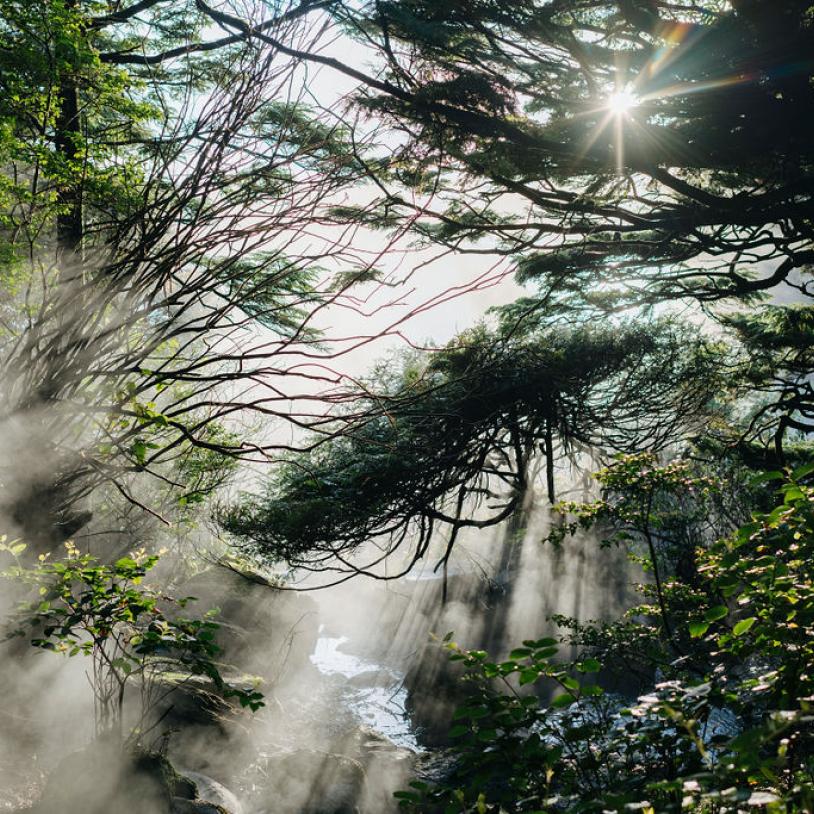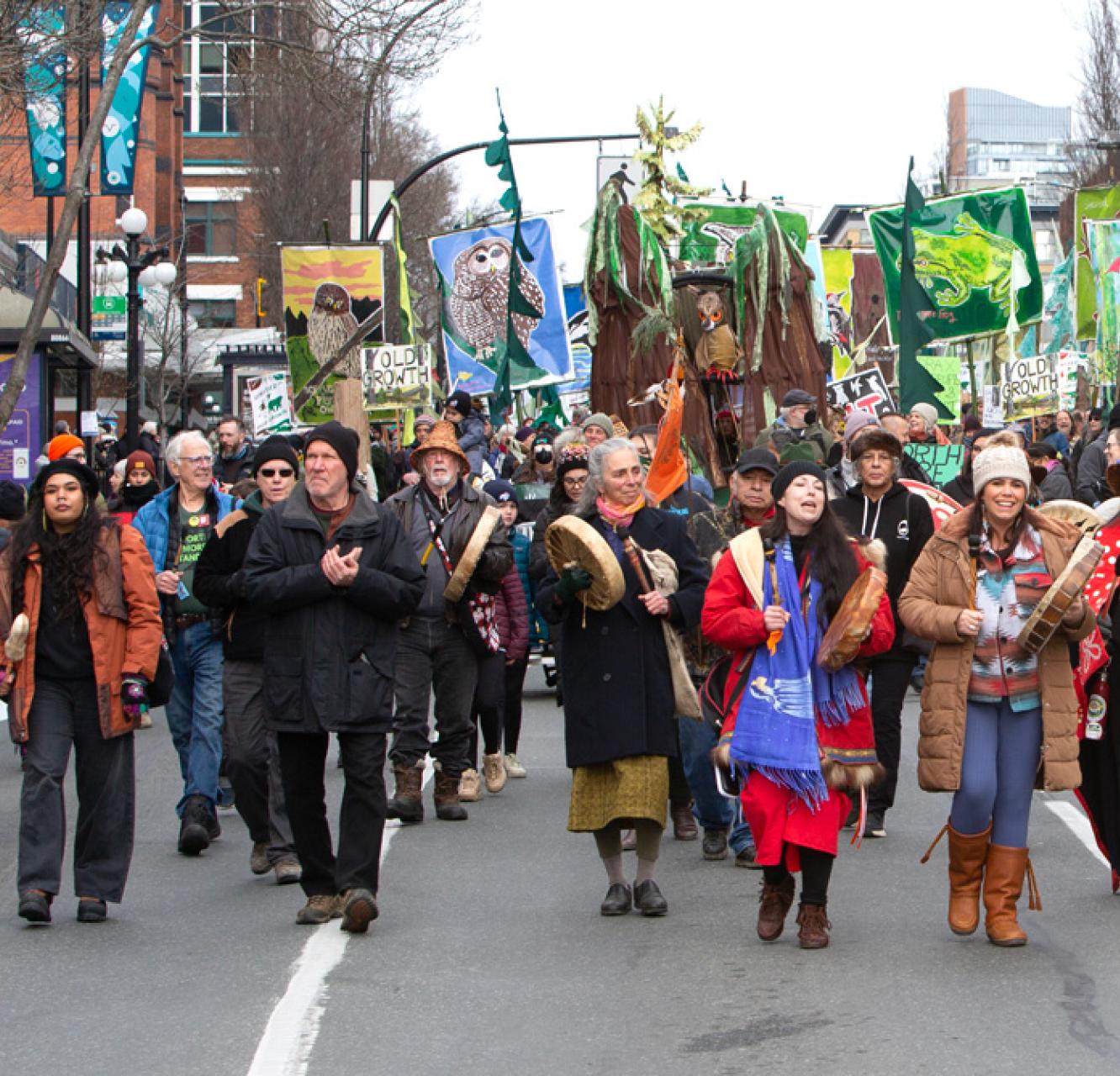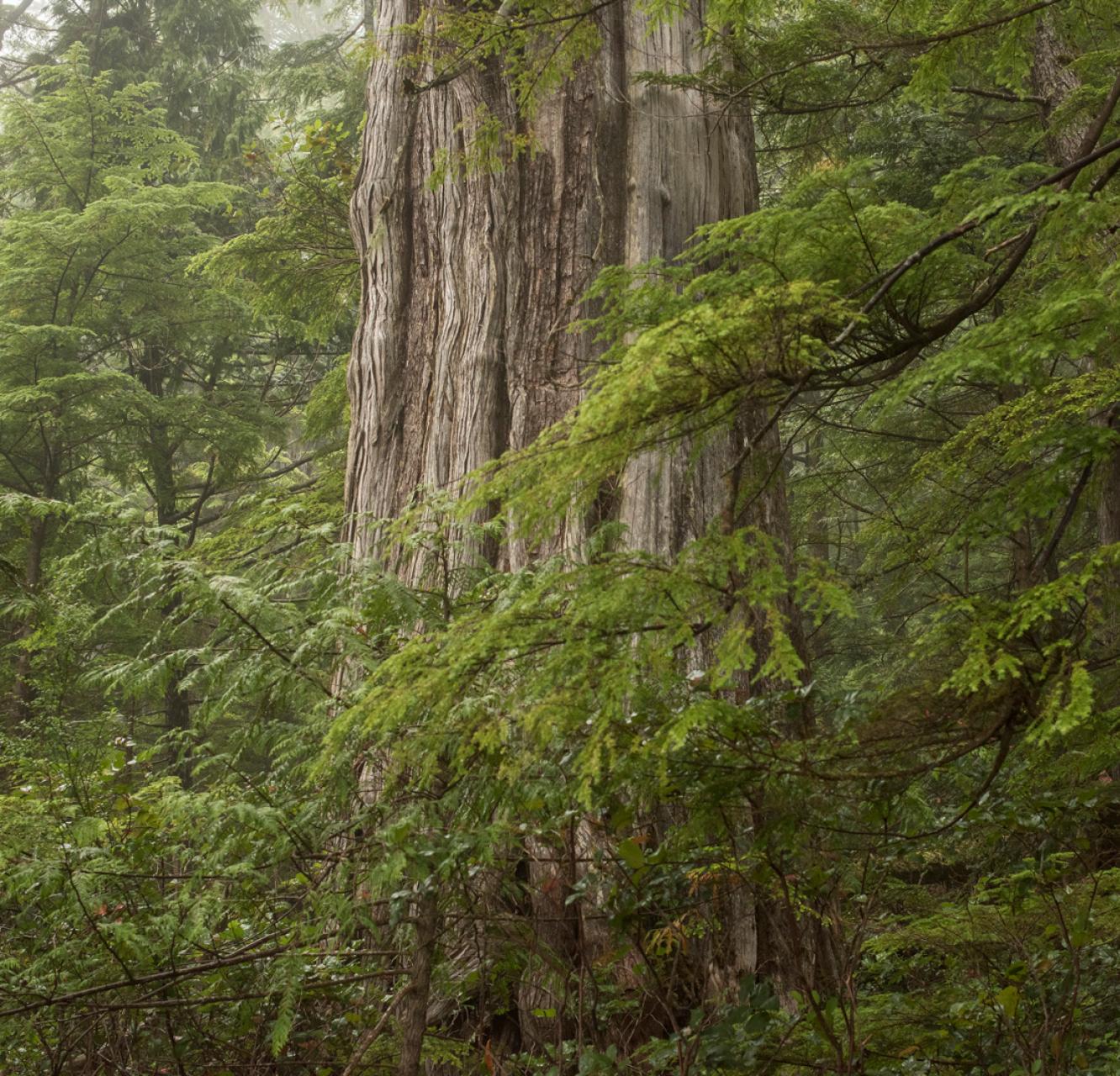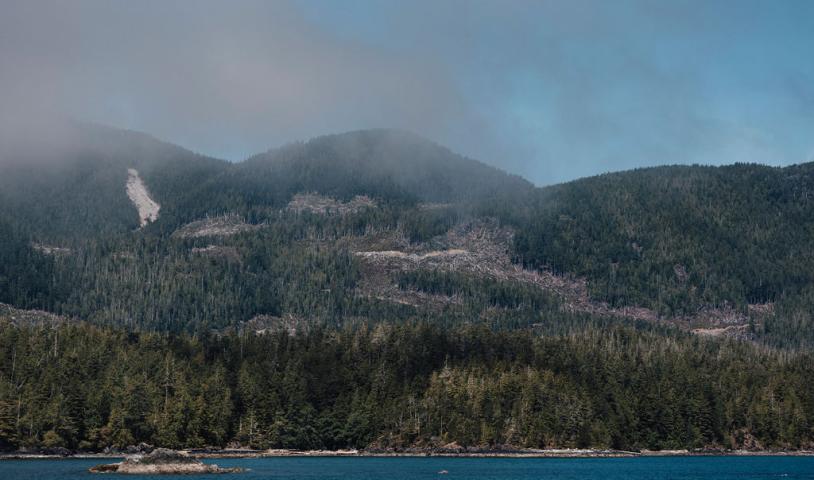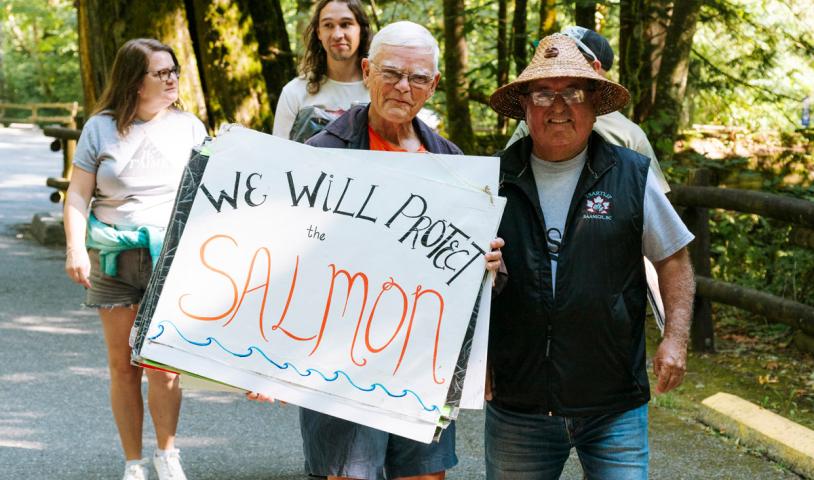The Sweet Smell of Red Cedar ‑ Wild Times
Monday, November 14, 2005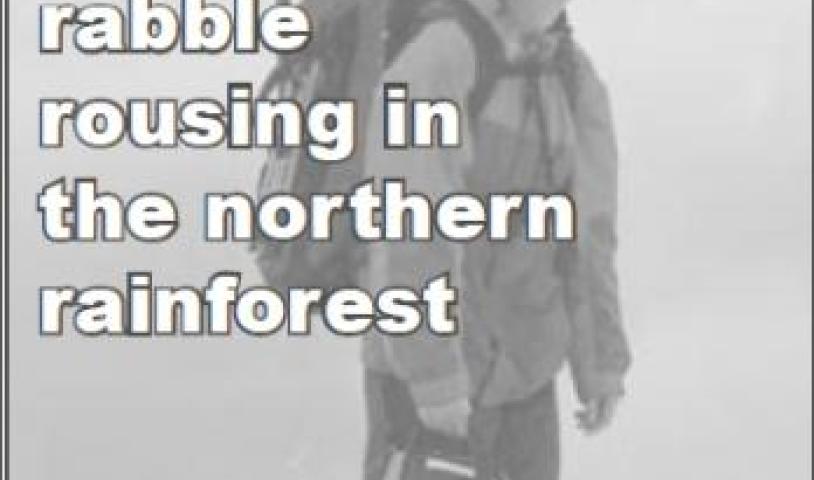
November 15th, 2005 - Read Joe Foy's Wild Times column in the Watershed Sentinel as he calls for First Nations forest stewardship to rescue the remaining ancient red cedar trees.
By Joe Foy
Back in ’62 my parents decided to move on to a piece of “bush land” on the eastern border of Surrey, just up the hill from Langley city.
It didn’t take long for my brother and I to start nosing through the salmonberry thickets. He was six and I was eight. We soon plunged into a green bushy world of big leaf maples, alders, cottonwoods and vine maples. To our surprise and wonderment, there looming large amongst the sword ferns and elder berry bushes ahead of us was what appeared to be a huge black medieval castle! It was the charred stump of an old growth red cedar tree.
In the years that followed we had many happy times goofing around in the old hollow stump. Sometimes though, I’d lay back and wonder about what the forest was like when the stump had been a tree.
In fact the stump had been a tree only about 80 years before our family had moved on to the land.
In the 1880s it had been part of the incredible Fraser Valley old growth forest, carpeting the bottomlands from the Burrard Peninsula to the Fraser Canyon. Back then the Stolo Native people, who had lived in and been sustained by these ancient forests since before time, had just been moved onto tiny so-called “Indian reserves” by the Colonial government. The ancient Stolo names for the land were being moved too. Government maps were replacing them with the names of towns in far away England. Names like Surrey.
The 1880s was also the time logging operations in Surrey were moving into high gear, switching from horse and oxen to steam power in order to haul out the huge old growth logs.
By 1929 the last stands of Surrey’s giant spruce, fir, hemlock and red cedar were being felled at Green Timbers, just east of Whalley. The ancient forest was done. Only the big stumps remained. The logging companies moved on.
In ’72 a friend and I decided to check out a hiking trail in the Chilliwack Valley we’d read about in a newspaper article. The piece by outdoors writer Tony Eberts said that there were big red cedars. Live ones.
As we bounced up the Chilliwack logging road in my battered Volkswagen beetle, huge logging trucks stuffed with massive old growth red cedar logs blew past us in a storm of dust and cedar bark bits. On the hillsides fresh clearcuts oozed mud and debris down the slopes.
Sure enough, at the south end of Chilliwack Lake the road ended and we arrived at the trailhead. My buddy and I wandered down the path, turned the corner and walked straight into what I had imagined my backyard had looked like in the 1880s. There were groves of ancient red cedar trees with trunks even larger in girth than the old stump back home.
Salmon schooled up in the clear pools of the nearby river and bear paw prints stitched the entire length of a sand bar.
Since that day I’ve hiked through surviving ancient red cedar groves from Clayoquot Sound to the Elaho Valley and from the Great Bear Rainforest to the Inland Rainforest. I’ve seen where Native people have pried planks from the old red cedar trees (often without killing them) to make longhouses. I’ve seen living trees with bark strip scars made during the construction of rope and clothing. I’ve even come across old canoe building sites.
Over the past several years, coastal logging companies have been really nailing red cedar hard in a bid to boost drooping bottom lines, even using helicopters to hunt down the last old groves on the steep mountainsides, like the last herds of buffalo were once hunted on the prairies. Where I now live in New Westminster I see rafts of red cedar in chains being dragged up river to the mills, where they are cut up and exported to the USA, Europe and Japan.
Recently though I’ve been noticing a hopeful sign. Like the sweet smell of cedar, First Nation’s land use plans are wafting across the land.
For example, the Hupacasath First Nation, located on southern Vancouver Island in the Port Alberni area have recently completed a Land Use Plan for their territory. You can see it for yourself at http://www.hupacasath.ca/.
And the Heilsuk First Nation, located at Bella Bella has completed one as well.
Both plans call for an end to the plunder of red cedar.
Not long ago the European Union banned the importation of grizzly bear heads and hides from BC citing the province’s failure to look after the bears. Maybe its time the Europeans took a look at what’s been happening to red cedar.
Here at home, I say it’s time to get First Nations names back on the maps and their stewardship back in the forests before all of red cedar country becomes one big Surrey. There’s not much time left.
Joe Foy is Campaign Director for the Wilderness Committee, Canada’s largest citizen-funded membership-based wilderness preservation organization.
